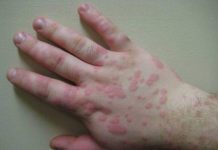The name Leptospirosis may seem frightening but unless you live in Hawaii your chances of contracting this infectious disease are not very high.
Only about 200 cases are reported every year in the United States and about 50% of those are located in Hawaii. However, understanding the disease and its causes can help you protect yourself and your family.
Leptospirosis Explained
This disease is caused by a spirochete, a type of bacteria that is transmitted through many types of mammals, including rats and foxes.
If you come in contact with soil or water which has been contaminated with the bacteria from these animals, you could contract the illness. You can also acquire the disease by eating food from an infected animal or by swimming in contaminated water.
Leptospirosis Symptoms
As with many types of bacterial infection, you’ll go through phases of illness. The symptoms may not begin immediately after exposure either so tracing the disease back to its source can be a problem.
You may not start feeling bad for up to 25 days after coming in contact with the bacteria.
First, you are likely to experience some flu-like symptoms. These may include body aches, eye pain, eye redness, eye watering, chills and a fever.
After about a week, you’ll start to recover from the initial symptoms only to be hit by another bout a couple of days later. You’ll have the same problems but these will include more aching and stiffness in the neck. You might also experience pain in your abdomen or meningitis (inflammation of the spinal column).
The Leptospirosis Diagnosis
If you suspect you developed Leptospirosis, you should contact your physician. He or she will probably order a culture be completed to test your body for the presence of the spirochete.
A blood test, urine, or even spinal fluid can be used for the culture. If a culture is not used, the physician may choose an alternative method.
The most common is to take a blood sample and to test the levels of antibodies present. High levels of Leptospira antibodies in the blood indicate the presence of the bacteria.
Leptospirosis Treatment & Prevention
To kill the bacteria in your body, your physician will prescribe strong antibiotics, such as penicillin or doxycycline.
However, if the disease has progressed very far before treatment is started; you may require hospitalization and IV (Intravenous) treatments to speed up your recovery and to prevent liver or kidney complications (kidney failure). Even in severe cases, mortality levels are not very high.
However, avoiding contaminated food and water can help protect you from the infection. Some countries also have an annual vaccine against the disease.













